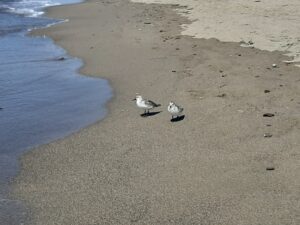Birding Maremma
Maremma is justly famous for its wild landscape of mountains, dense forests, and wetlands. The Mediterranean Sea is visible from everywhere in this part of Tuscany, a flat blue sheet between gentle hills. A wide variety of colorful Mediterranean birds can be found here against a captivating backdrop of sea cliffs, reedbeds, pristine sandy beaches, maquis, and wooded hills.
Much of Maremma’s ornithological bounty is concentrated in the wetlands, the most famous Diaccia Botrona Marsh and Orbetello Lagoon. Here you can find European golden plover, common crane, greater flamingo, graylag goose, great bittern, ferruginous duck, and little bittern. Squacco herons, pied avocets, black-winged stilts, and Mediterranean and slender-billed gulls are in almost constant view.
The lagoons and brackish waters of Maremma are among the most significant wintering sites internationally for waterfowl and shorebirds. Among the notable species arriving each autumn from northern Europe are red-crested pochard, greater scaup, golden plover, spotted crake, ruddy turnstone, and black-tailed godwit.
Easy walks through the countryside let you make the acquaintance of such beauties as European green woodpecker, roller, common stonechat, red-footed falcon, golden oriole, Sardinian warbler, and red-backed and woodchat shrikes. European bee-eaters and common kestrels flaunt their colors in the sky just above your head.
Honey buzzards may appear high overhead, perhaps in company with a hobby or red kite; even the Eleonora’s falcon makes an occasional appearance in the seaside hills facing the sea. European scops owls and stone curlew can be heard in the evening, and the great spotted cuckoo can be spotted in umbrella pine forests.
A unique and often uniquely productive birding experience is the lovely ferry journey to the islands of the Tuscan Archipelago, featuring Audouin’s gulls or Scopoli’s and yelkouan shearwaters.
Maremma can be easily reached from Rome, Siena, Pisa, and Florence.
“My wife and I specifically wanted to bird in Maremma. We saw so many new life birds and even saw some more rare birds. Marco knew so much about birds and also was able to tell us a lot of historical facts about the areas we visited. The day trip we did with him was a highlight of our entire vacation to Italy” – Happy Customer from TripAdvisor
